The Science behind Tomatis® : How it works ?
From a scientific standpoint, the Tomatis® Method strengthens the communication pathway between the ear and the brain, leading to improvements in cognitive, emotional, and motor abilities. Let’s delve into the mechanisms behind the Tomatis® effect and explain how the Tomatis® Method works.
The ear is the main doorway to the brain
80% of the sensory stimuli that the brain receives come from the ear, which is in fact the most powerful sensory organ in the body. Typically, the brain and ear collaborate to identify and make sense of incoming stimuli, a process known as “auditory processing”. This enables the brain to transform sensory signals, predominantly sounds, into meaningful information and respond appropriately. However, a lack of synchronization between the brain and ear, referred to as “auditory processing disorders (APD)”, manifests in different learning and communication disorders such as ADD/ADHD, Autism, DYS disorders, and Speech & Language issues.
Hearing (is passive)
- Refers to the act of perceiving a sound through the ear or merely the ability of the ear to sense sound
- Does not require a conscious effort – physiological process
- Involuntary

≠
Listening (is active)
- The act of perceiving, interpreting, understanding & giving meaning to the sound one hears
- Require a conscious effort – cognitive process
- Voluntary
The Tomatis® Method, a brain re-training program utilizes the ear as a powerful sensory integrator to enhance the crucial process of auditory processing and the connections between the ear, brain, and body. Through the stimulation of the ear, the method is able to improve the integration of sensory information to help your brain interpret better, leading to an improved listening.
Not just hearing!
The Ear Plays a Vital Role in Three Key Human Functions
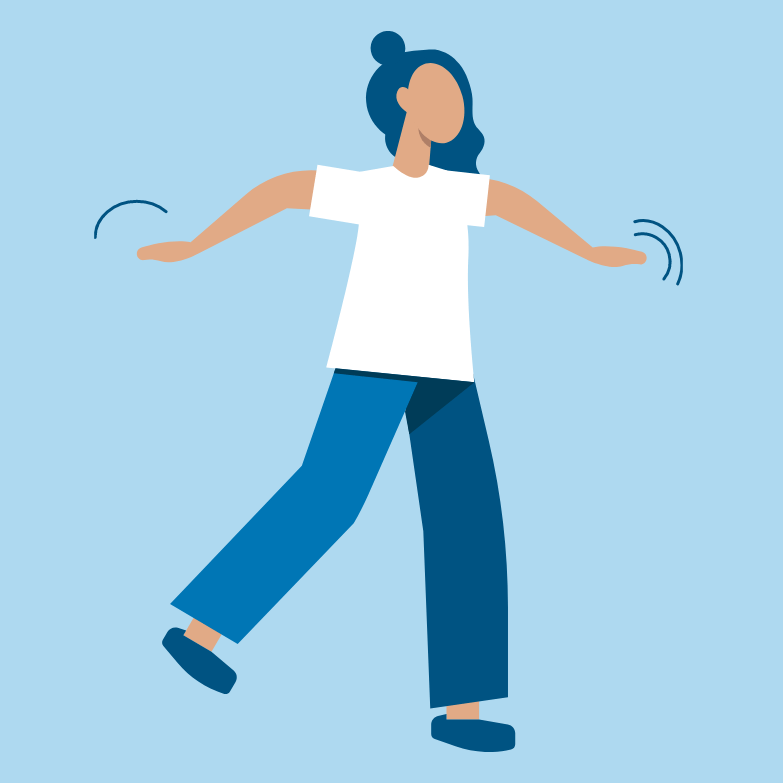
Balance and Coordination
The inner ear’s vestibular system is the “organ of balance”. It detects the slightest body movements and sends this information to the brain, allowing it to control posture and maintain balance

Brain Energy and Emotional Regulation
The ear can stimulate and revitalize the entire cortex, acting as a natural energy boost. High-frequency stimulation can increase arousal and improve readiness for learning, while low-frequency stimulation can promote relaxation and a sustained sense of calm.

Cognitive and Listening Abilities
When the brain is misaligned with the ear, it can misinterpret the information sent by the cochlea (spiral-shaped bone found in the inner ear). You perfectly hear but you don’t really listen, which means your brain is not able to decode the message received and add meaning.
Neuroplasticity: Rewiring your brain with lasting changes
What is neuroplasticity?
The brain has the ability to change, grow and adapt in response to new repeated experiences and learning, which is known as neuroplasticity. Scientists, once believed that neuroplasticity only occurred in early childhood and that the brain “solidified” and became fixed in its habits in adulthood. However, research has shown that the brain can continue to change and develop regardless of one’s age.
Even before the term ‘neuroplasticity’ came into being, Dr. Tomatis vouched that the brain is capable of forming new neural connections and rewiring existing ones – which is crucial for learning, development, and recovery from injury. In his book – The Brain’s Way of Healing, Dr. Norman Doidge pays homage to Dr. Tomatis, the founder of the Tomatis® Method and sees in him a precursor of the new theories on the human brain.
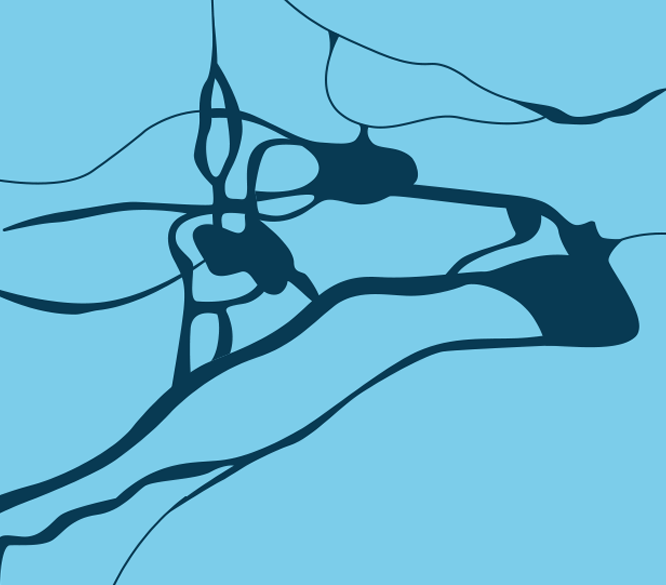
The Tomatis® Method leverages this concept of neuroplasticity by providing auditory stimulation to retrain or rewire the neural connections involved in listening and cognition, balance & coordination, and emotional regulation. Simply put, the method retrains the brain and reorganizes the nervous system, helping individuals overcome difficulties and enhance their well-being.
How does the Tomatis® Method leverage neuroplasticity?
Here’s where it gets interesting! The Tomatis® Method plays on 3 factors identified as especially important in facilitating neuroplasticity :
Interest
Undoubtedly, your own motivation is essential, however, here we refer to your ‘brain’s interest’ or capturing the brain’s attention through the use of dynamic filters and modulated sounds [Electronic Gating®].

Intensity
The brain needs an intense sensory workout to form new neural pathways. Over 80% of the brain stimulation comes from the ear, which is ideally suited to strengthen neural connections. The combination of air-bone conduction, rich harmonics and auditory stimulation make the Tomatis® Method an intensive program that integrates multi-sensory information in the brain.

Repetition
Building and strengthening your brain requires time and repetition. The listening program [neuroplasticity exercise] is spread out into 3-4 listening blocks with breaks in between to integrate changes. One block typically lasts for 14 days allowing it to create new neural connections and transform them into highways (read lasting changes) with time.

The Tomatis® Method utilizes targeted sounds and frequencies to stimulate the nervous system, promoting improved brain function. By harnessing neuroplasticity, Tomatis® helps individuals overcome challenges and enhance their well-being by retraining the brain and reorganizing the nervous system.

5 Neuroscience Techniques in the Tomatis® Effect:
The Parameters of the Method
The Tomatis® Method incorporates five advanced techniques from neuroscience into a single proprietary technology, making it a standout and exclusive approach. By utilizing the natural pathways of the auditory system and employing techniques inspired by nature, the method stimulates various brain centers.

1. Electronic Gating® : Surprising the Brain
When your ability to listen is impaired, your brain struggles to process and make sense of the sounds your ear is receiving. To overcome this, it’s necessary to re-engage the brain’s attention. The brain is particularly sensitive to unexpected changes and will respond when it encounters them. For example, while you may tune out the constant barking of your neighbor’s dog, a sudden meow would catch your attention and startle you.
The Tomatis® Method employs a unique approach to improve auditory processing and the ear-brain connection. Through the Electronic Gating® system, music is delivered with sudden changes in timbre and intensity, captivating the brain’s attention. This exposure to unpredictable acoustic contrasts enhances listening clarity and overall skills. The Gating® system is customized based on individual assessment results, utilizing the principles of perceptual contrast and saliency.
2. Air and Bone Conduction :
Helping you to listen better
In the realm of hearing, there are two methods of sound transmission: air conduction and bone conduction. Air conduction is the conventional way we perceive sounds, as they travel through the air and enter the ear canal. However, bone conduction is an alternative method where sound waves directly reach the inner ear through the skull’s bones.
The Tomatis® Method headphones are intelligently configured to initially transmit sound through the bones of the skull, priming the auditory system for subsequent reception via the air channel. This dual transmission technique serves to educate the brain in accurately deciphering sensory sound messages, promoting enhanced auditory processing. Technology allows us to adapt the speed of transmission to the listening skills through specific double settings through air conduction and bone conduction.
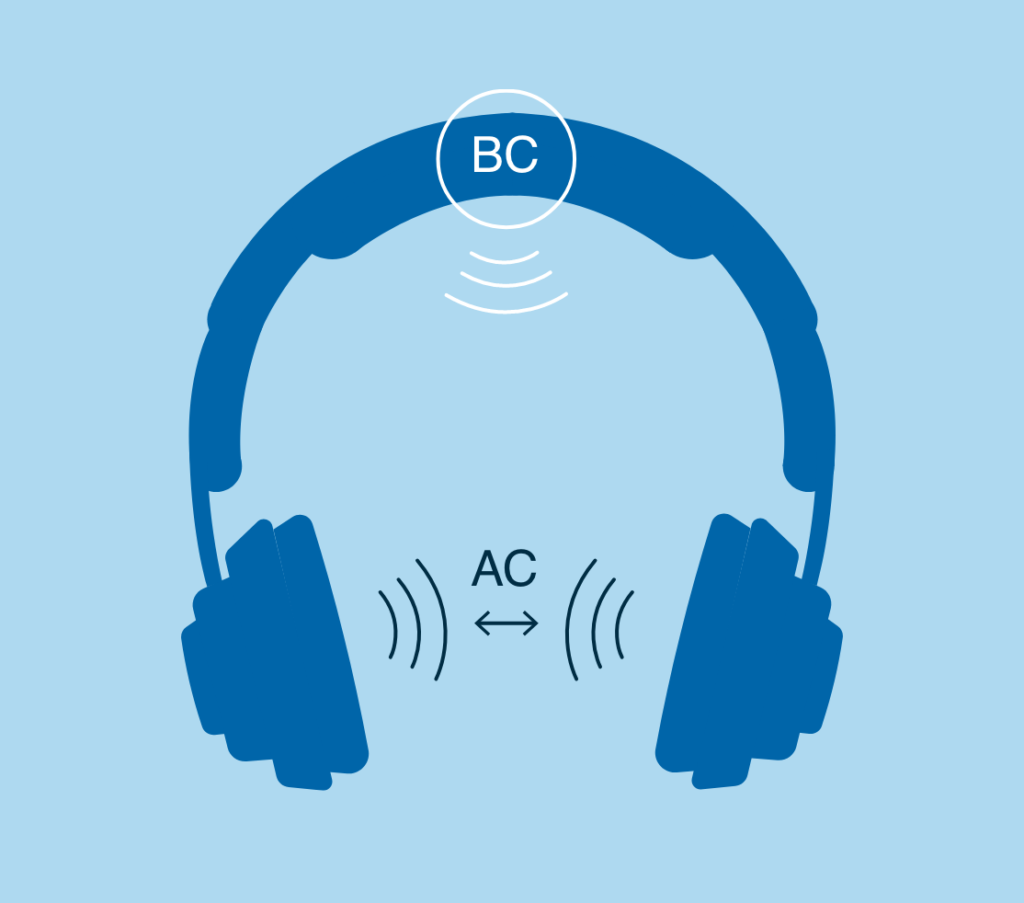
BC: Bone Conduction
AC: Air Conduction

3. Rich Harmonic Music :
The Transformative Power of Sound
A Tomatis® program encompasses two key components: the integration phase and the audio vocal work phase.
During the integration phase, the participant engages in listening to filtered high-definition musical recordings, primarily compositions by Mozart, without intentionally attending or engaging with it. This phase stimulates the auditory system through the Tomatis® Electronic Gating® technology, leveraging the enriching effect of high-frequency harmonics and promoting the process of perceptual contrast. The brain is effectively stimulated and engaged by these higher frequencies
Research shows that rich harmonic music can affect the brain in a variety of positive ways, from boosting memory and attention to aiding in relaxation. Conversely, low-frequency sounds or music specifically chosen for the purpose of Electronic Gating®, tend to have a relaxing effect on the body by reducing heart rate and inducing a state of calmness. These specific modulations enhance the Tomatis® effect.
4. Voice Auditory Feedback (Audio Vocal Phase) :
Control your speech and language
Audio vocal work is based on the principle of auditory feedback. During audio vocal work, the person listens to his or her own voice modified by the Tomatis® effect through singing, word repetition, or reading exercises performed with the Tomatis headset and its built-in microphone. In return, the person unconsciously modifies his or her speech. The content of the audio-vocal work is adapted to each person’s listening skills and level of progress.
The audio vocal work aims to promote a better functioning of the brain networks involved in the relationship between how a sound is processed and produced. These audio motor networks are unique to human beings and are key in the development of vocal fluency, voice quality, working memory but also emotional regulation, socialization processes and empathy. They strongly promote the sense of musicality and literacy, and above all the desire to communicate.
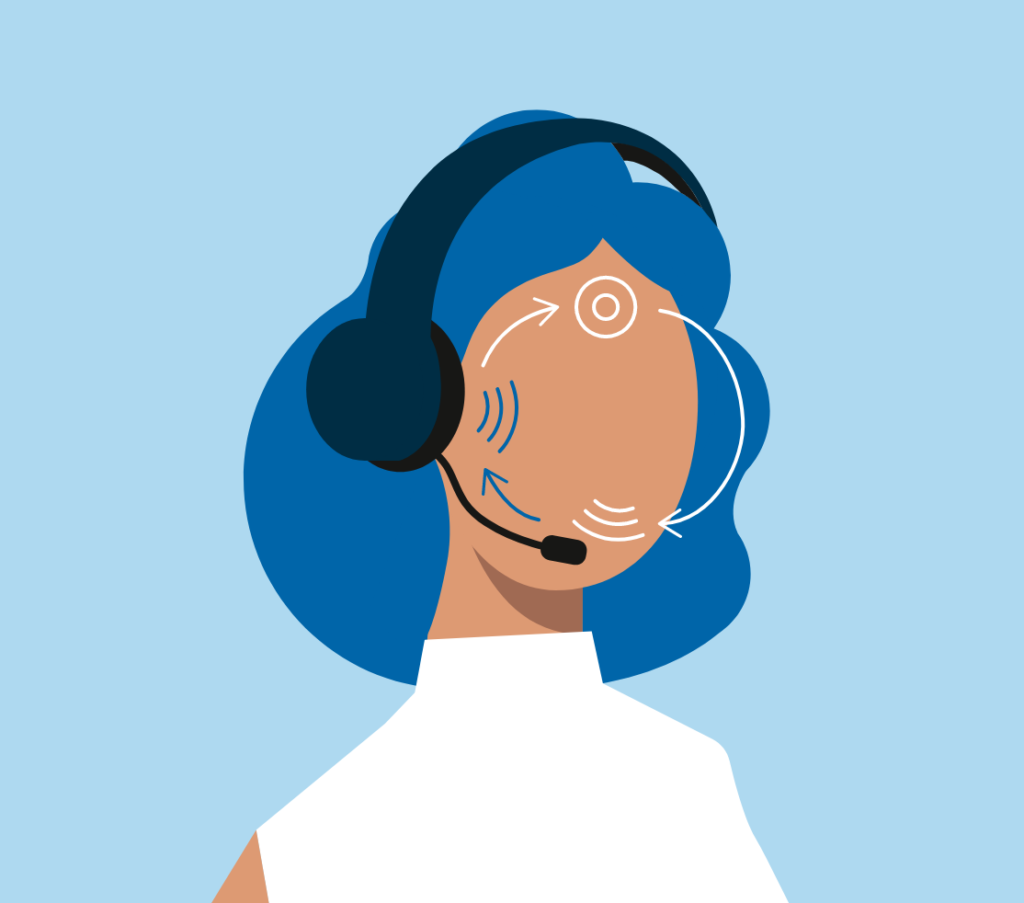

5. Auditory Laterality :
Strengthening your right ear
We have two hands, two eyes and two feet. You can be right or left dominant for each. The same is true of our ears. One is dominant, which means that it is processing the information faster than the other one. That might be because the connections of the right and left auditory pathways within the brain are really different.
The brain processes auditory information differently on each side. The right ear’s pathway is linked to the left hemisphere of the brain, responsible for language comprehension. Conversely, the left ear’s pathway connects to the right hemisphere, primarily engaged in emotional perception and musical processing.
A right dominant ear is typically associated with improved learning and communication. The Tomatis® Method can stimulate the right ear by adjusting the sound intensity appropriately in each ear. This approach aims to enhance learning and communication abilities, leveraging the benefits of right ear dominance.
Start your journey with Tomatis®
To maximize your chances of success with the Tomatis® Method, please follow these steps :
Get your personalized Tomatis® Welcome Booklet
Find the best Practitioner with our interactive Map
Start your Listening Program and transform your Life





